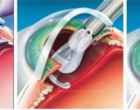In Part 1 of this series, we gave a general introduction to the problem of non-reproducibility of preclinical studies and some reasons why CROs including Comparative Biosciences are somewhat immune to it.
Chapter Four of Rigor Mortis is entitled “Misled by Mice”. It is a general critique of animal research, although it focuses on the most common research animal: mice. If you have read this far, you are probably aware that animal research is one of mankind’s most successful endeavors and has been involved in virtually every medical advance since the discovery that there are more than four elements, yet Harris’s critique supports animal rights movements arguments, such as claims that animal research is irrelevant. There are new organizations that appear to be an effort of animal rights movements to claim that government-supported animal research is a waste of taxpayer dollars. Thus, the research community has a very narrow path to tread to correct its problems without contributing to anti-research sentiment.
According to Harris, “At root, the problem is that lab animals aren’t just small, furry humans” (p. 72). Of course, nobody who is actually involved in animal research thinks that lab animals are just small, furry humans, which is why years of training and experience are required to interpret the results properly. Unfortunately, anti-research people will parrot such platitudes as though they actually meant something.
Harris criticizes animal research for both Type I error (false positives) and Type II error (false negatives), in both safety and efficacy testing. In safety testing, Type I error no doubt prevents some effective drugs from being developed, but it is difficult to assess the extent of the problem. It is certain that positive toxicology findings keep many toxic compounds from entering humans for the very sound reason that it is unethical to conduct experiments in humans unless certain strict criteria are met, including favorable results in animals, as set forth in the Nuremberg Code. Of course, for the very reason that toxic compounds never make it to human studies, we do not know whether a finding of unacceptable toxicity in animals is a true positive or not.
Harris cites the experience with fialuridine (FIAU) as an example of Type II error in toxicology testing. FIAU was a promising antiviral drug, which appeared reasonably safe in preclinical testing in mice, rats, and monkeys, and was advanced to clinical trials in chronic hepatitis B patients. Tragically, seven of the fifteen volunteers experienced liver failure after several weeks of treatment. Five of them died; the other two were saved by liver transplants. FIAU is certainly an example of Type II error, but it is an extreme, not a typical example.
We do not have all of the answers as to what went wrong with FIAU, but we suggest that far more humans in clinical trials have been spared from toxicity by preclinical testing than have been endangered by it. It should be noted that the preclinical safety studies were all done in normal, healthy animals, whereas all of the patients who became ill had chronic hepatitis B, raising an old question in preclinical safety studies: should at least some safety studies be performed in animal models of the disease in question?
We would also note that even humans do not perfectly predict human liver toxicity. The last five patients to enter the ill-fated trial received FIAU for up to four weeks and had no evidence of toxicity. Thus, a short-term safety study in humans would not have detected the toxicity, and indeed, short-term studies in humans were clean. Moreover, idiosyncratic hepatotoxicity is probably the leading reason for withdrawal of approved drugs from the market, after they have been tested in thousands of patients.



